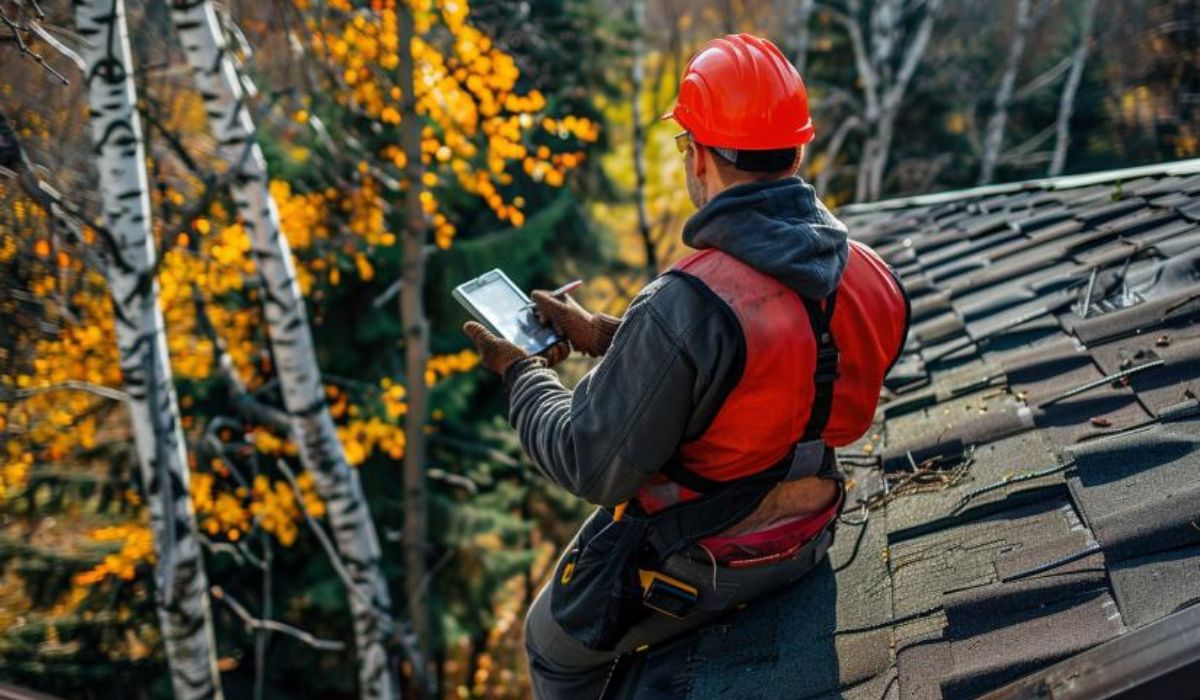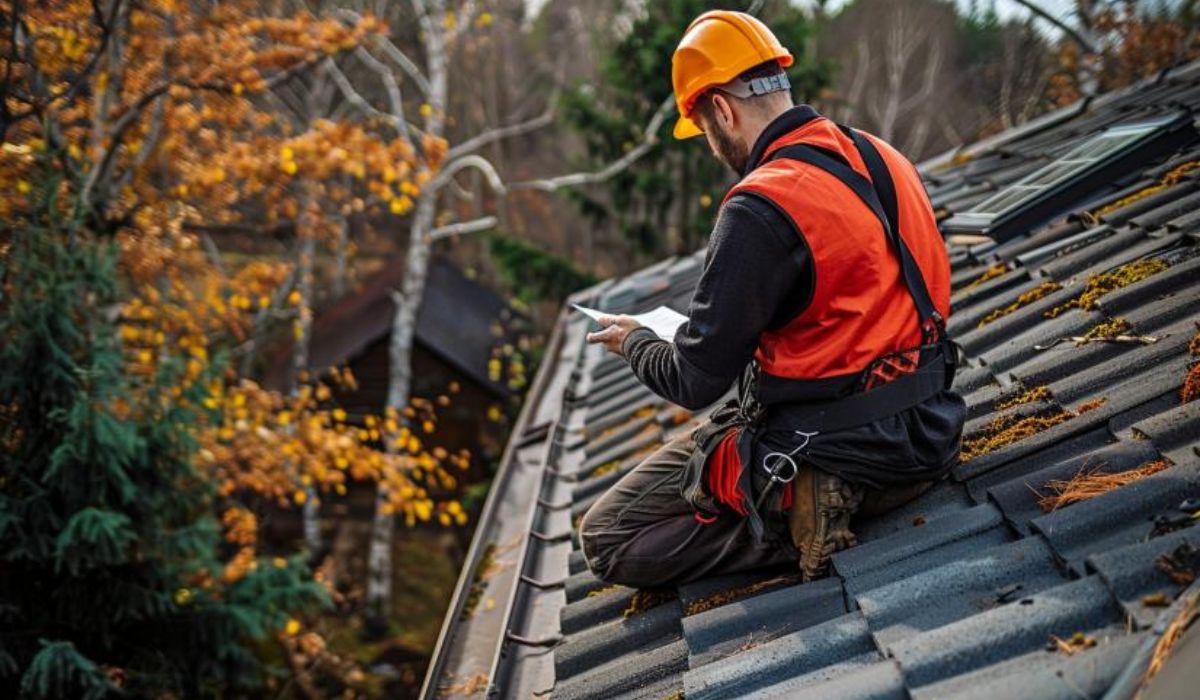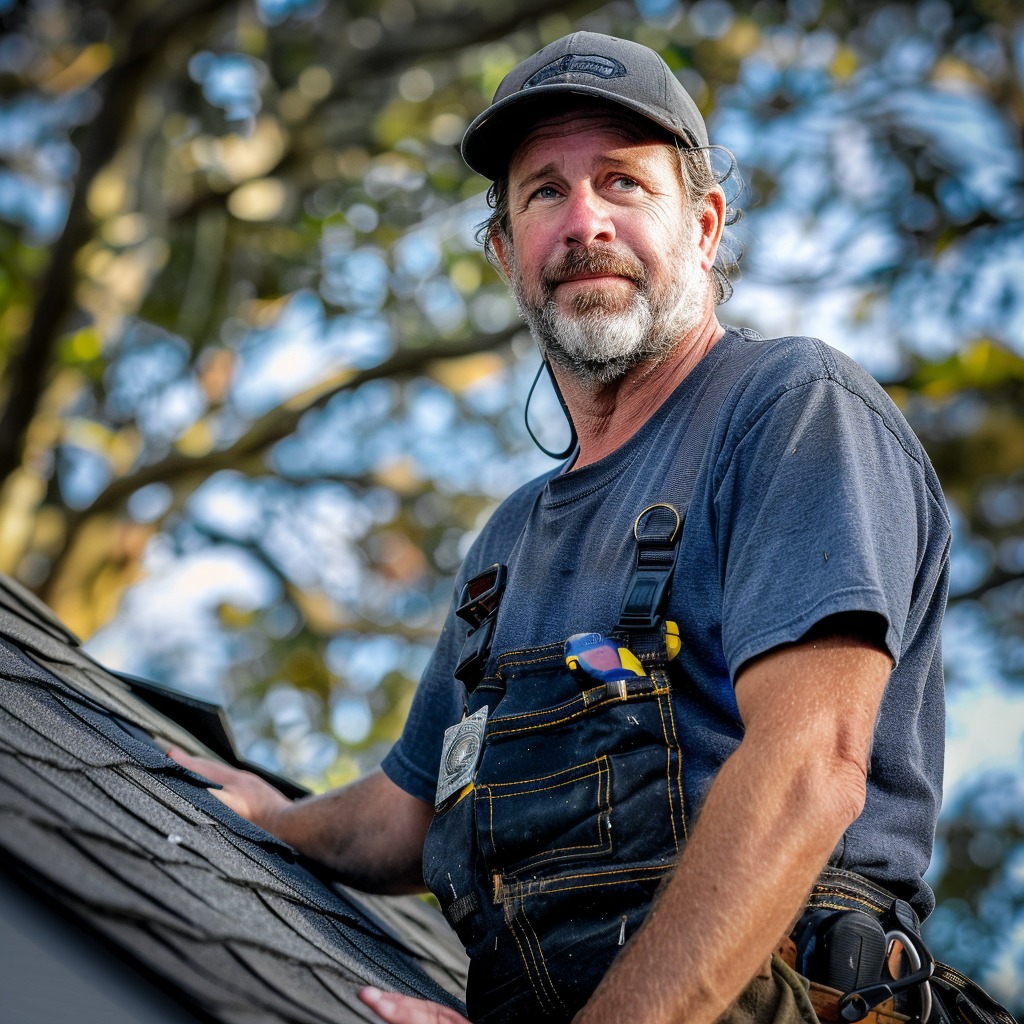
When was the last time you had your roof inspected by a professional? Do you think it’s unnecessary or only for emergencies? Think again. Regular roof inspections are crucial for maintaining the safety and durability of your property. They help identify roofing issues in their initial stages, preventing more costly damage in the future.
So, what exactly do these inspections entail? How often should you have them done? And what are the benefits of hiring a professional for the job? In this article, we will delve into the importance of professional roof inspections and why they should be a part of your regular maintenance routine.
Key Takeaways:
- Regular roof inspections are crucial for maintaining the safety and durability of your property.
- Inspections help identify roofing issues in their initial stages, preventing more costly damage in the future.
- Hiring a professional for roof inspections ensures a thorough assessment of your roof’s structure, exterior components, and interior signs of damage.
- It is recommended to have your roof inspected every spring and fall, as well as after major storms or when buying/selling a home.
- Inspection reports provide a clear understanding of the damage and necessary repairs, helping you prioritize and plan for future roof replacements.
The Importance of Roof Inspections
Routine roof inspections play a vital role in protecting your home and preventing potential issues from worsening. By investing in regular inspections, you can proactively address roofing problems before they become major concerns that require costly repairs. Not only do these inspections help safeguard your property, but they also prolong the life of your roof, saving you money in the long run.
During roof inspections, professionals assess the condition of your roof, identifying any signs of damage or wear. By detecting issues early on, such as loose shingles, cracked tiles, or compromised flashing, repairs can be made promptly, preventing further deterioration and potential leaks.
Additionally, roof inspections ensure that your roof functions properly, providing a strong barrier against the elements. Properly functioning roofs protect your home from leaks, structural damage, and moisture-related issues that can lead to mold growth or compromised structural integrity.
By prioritizing roof inspections, you not only gain peace of mind but also maintain the value of your property. Regular inspections and timely repairs extend the lifespan of your roof, allowing you to maximize its durability and protect your investment.
Components Checked During Roof Inspections

During a roof inspection, professional inspectors thoroughly examine various components of your roof to ensure its integrity and functionality. This comprehensive assessment helps identify any potential issues and allows for timely repairs or maintenance. The inspection process typically involves a thorough evaluation of the roof structure, exterior components, and interior areas.
The Roof Structure
Inspectors pay close attention to the roof structure, including the rafters and trusses, as they are essential for maintaining the overall stability of the roof. They look for signs of sagging or damage that could compromise the structural integrity. Identifying and addressing these issues early on can prevent further damage and potential safety concerns.
Exterior Components
The exterior components of your roof, such as the soffit, fascia, eavestroughs, skylights, chimneys, vents, and seals, are also thoroughly inspected. These elements contribute to the functionality and protection of your roof. Inspectors check for any signs of damage, deterioration, or improper installation. Addressing these issues ensures proper ventilation, prevents water infiltration, and extends the lifespan of your roof.
Interior Inspections
Interior inspections are conducted to identify any hidden issues that may not be visible from the outside. Inspectors carefully examine the attic, ceilings, and walls for water stains, wood rot, mold growth, and signs of pests. These interior issues can lead to structural damage, compromised insulation, and health hazards. Detecting them early allows for prompt remediation and prevents further damage to your home’s interior.
When to Schedule a Roof Inspection
Regular roof inspections are essential for the maintenance of your property. It is recommended to have your roof inspected every spring and fall to detect any damage that may have occurred between seasons. However, there are specific occasions when you should call in the experts for a thorough inspection:
- After major storms with high winds, hail, or heavy rain/snow: These weather events can cause significant damage to your roof, such as missing shingles, leaks, or structural issues. A prompt inspection can identify and address these issues before they worsen.
- Before listing your home for sale: A roof inspection before selling your property allows you to address any necessary repairs or replacements, increasing its value and attracting potential buyers.
- When refinancing your home: Lenders may require a roof inspection to ensure the condition of your roof before approving your refinancing application. This inspection provides an accurate assessment of the roof’s condition and helps in determining loan terms.
- If you purchased a home without an inspection: If you recently purchased a home without a prior inspection, it is crucial to schedule a roof inspection to identify any existing or hidden issues. This ensures that you are aware of the condition of the roof and can plan for necessary repairs or replacements.
- When required by your insurance provider: Some insurance providers may require periodic roof inspections to assess the condition of your roof and validate your coverage. Fulfilling this requirement promptly can prevent any potential conflicts or coverage issues in the future.
Including these specific occasions for roof inspection in your overall maintenance plan ensures that you stay proactive in protecting your property and avoiding costly damages. With regular inspections and prompt attention to any issues that arise, you can maintain the safety, longevity, and value of your roof.
Importance of Prompt Inspections
Prompt roof inspections in the mentioned occasions allow for early identification and addressing of potential issues. By catching and resolving problems early on, you can prevent them from worsening and save yourself from expensive repairs down the line.
Benefits of Professional Roof Inspections
Professional roof inspections provide several key benefits for homeowners, guaranteeing the safety and longevity of your roof. By detecting roof damage early on, such as cracked tiles, loose shingles, or rusted flashing, inspections allow for prompt repairs before these issues worsen. This proactive approach helps prevent further damage and ensures the structural integrity of your roof.
One of the significant advantages of regular inspections is that they offer crucial information for preparing and budgeting for future roof replacements. By identifying the extent of damage and the necessary repairs, inspections help homeowners understand the costs involved and plan accordingly. This prepares you for the eventual replacement, both financially and logistically, and ensures a smooth transition when the time comes.
“Professional roof inspections are the key to extending the lifespan of your roof, ultimately saving you money in the long run.”
In addition to preparing for future replacements, inspections can actually extend the lifespan of your current roof. By addressing issues early on, you prevent minor damage from progressing into more significant problems that could require a full replacement. This not only saves you money but also ensures the longevity and durability of your roof.
Beyond detecting damage and preparing for replacements, professional roof inspections offer an added layer of safety for homeowners. Inspections help identify potential hazards, such as weakened structures or drainage issues, that could pose risks to your property’s integrity. By addressing these concerns promptly, you can guarantee the safety of your home and ensure peace of mind for you and your family.
Overall, professional roof inspections are an essential investment for homeowners. They detect roof damage, prepare you for future replacements, extend the lifespan of your roof, and guarantee the safety of your property. By prioritizing regular inspections, you can proactively maintain your roof’s condition, protect your investment, and secure the well-being of your home and family.
Choosing the Right Ladder and Wearing the Right Shoes
Ladder safety is of utmost importance when conducting roof inspections. To ensure your safety, it is crucial to choose the right ladder for the job and wear appropriate shoes. Consider the following factors when selecting a ladder:
- Material: Choose a ladder made from a sturdy and durable material, such as fiberglass or aluminum.
- Length: Select a ladder length that is suitable for the task at hand. Avoid using a ladder that is too short or too long, as it can compromise balance and stability.
- Duty Rating: Pay attention to the ladder’s duty rating, which indicates its weight capacity. Ensure the ladder can safely support your weight and any additional equipment you may need to carry.
- Ladder Variety: Different ladder types are designed for specific purposes. Choose a ladder that is appropriate for roof inspections to ensure optimal safety.
- Condition: Regularly inspect your ladder for any signs of damage or defects. Ensure that all its components, such as rungs and locks, are in good working condition.
In addition to choosing the right ladder, wearing the right shoes is crucial for ladder safety. Opt for shoes with:
- Flat Soles: Choose shoes with flat soles to provide a stable base and prevent slips.
- Heavy Soles: Shoes with heavier soles can improve stability and traction while navigating the ladder.
- Good Traction: Look for shoes with excellent traction to minimize the risk of slipping, especially in wet or slippery conditions.
- Slip Resistance: Shoes with slip-resistant soles further enhance safety by providing better grip on ladder rungs.
By carefully considering these factors and prioritizing ladder safety, you can ensure a secure and successful roof inspection. Take the necessary precautions and always prioritize your safety above all else.
Placing the Ladder and Setting Boundaries
Proper ladder placement is crucial for ensuring safety during roof inspections. When setting up the ladder, it should be placed on firm and level ground to provide stability. Avoid areas with potential hazards, such as loose debris or slippery surfaces, that could compromise ladder stability. By selecting a suitable location, you can minimize the risk of accidents and falls.
When using extension ladders, it’s important to open them completely and follow the four-to-one rule. This means that for every four feet of ladder height, the base should be positioned at a distance of one foot away from the supporting structure. Adhering to this rule can help prevent the ladder from slipping or moving while in use, maintaining stability and ensuring your safety.
In addition to ladder placement, setting boundaries during inspections is essential. It’s crucial to establish clear guidelines to ensure the safety of yourself and others. During the inspection, clients or any other individuals should not be allowed near the ladder or on the roof. This ensures that everyone remains at a safe distance and minimizes the risk of accidents and injuries.
Remember, ladder safety and setting boundaries go hand in hand when it comes to roof inspections. By following proper ladder placement techniques and establishing clear boundaries, you can enhance safety and minimize the potential risks associated with roof inspections.
Conclusion
Regular roof inspections are crucial for the safety and durability of your property. By identifying and addressing roofing issues in their initial stages, inspections can prevent costly damage in the future. They assess the structure of the roof, exterior components, and interior signs of damage, providing a clear understanding of necessary repairs.
Investing in professional roof inspections offers several benefits. They help detect roof damage, prepare for future replacements, extend the lifespan of your roof, and guarantee safety. By addressing problems early on, inspections can save you money in the long run and protect your property from water damage and structural issues.
During inspections, it is important to prioritize safety. Choosing the right ladder, wearing appropriate shoes, and following safety guidelines are crucial. By placing the ladder correctly, setting boundaries during inspections, and taking the necessary precautions, you can ensure a safe and successful inspection process.
Source Links
- https://bestchoiceroofing.com/locations/how-to-keep-your-roof-and-home-safe-with-roof-inspections/
- https://fitzroofing.com/benefits-of-professional-roof-inspection/
- https://www.inspectorproinsurance.com/safety/roof-inspections/

Meet William Adams, a seasoned roofing expert with over 30 years of hands-on experience in the industry. Having worked tirelessly under the scorching sun and through the fiercest storms, William brings a wealth of knowledge and expertise to the table. Hailing from the heart of the USA, he’s witnessed the evolution of roofing practices firsthand, mastering every aspect along the way. Now retired from the field, William spends his days cherishing time with his loved ones while sharing his invaluable insights through this platform. With William at the helm, you can trust that every tip, advice, and recommendation provided is backed by years of real-world experience and unwavering dedication to quality craftsmanship. Join us as we journey through the world of roofing, guided by the wisdom and passion of a true industry veteran.
